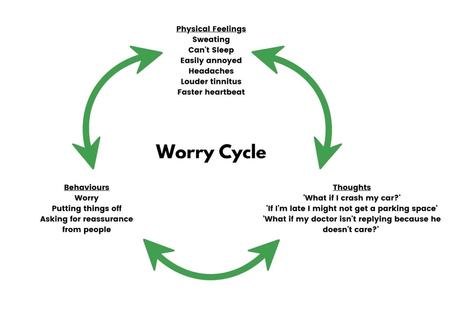
Our readers living with Superficial siderosis should be aware that living your best life means you need to look beyond simply treating the symptoms. Both your physical and mental health will benefit. By moving towards a healthier diet, exercising to your personal limits, and managing any other coexisting medical issues, you increase your chance of positively affecting your wellbeing. Conversely, smoking, an unhealthy diet, and little to no exercise increase the risk of aggravating your SS symptoms and speeding the disorder’s progression. This is the fifth instalment of our BEST LIFE Series.
Seeking Help
As most people know, there’s a stigma around mental health, and even more so when it comes to seeking help. We might not even realise the way we are acting or thinking, and the impact that it’s having on our daily lives. It can be subliminal, but taking a step back to think about things, can be a huge step forward. Having a degenerative neurological condition is worrying; not knowing what the future holds, waiting for the next symptom to appear, and wondering why our doctors are taking so long to reply to us. All these things and more can eventually become overwhelming, not to mention the other side of it, where we miss the things that we can no longer do.
At the start of the year, I finally managed to get an appointment with a Psychological Wellbeing Practitioner. It wasn’t easy to get the appointment, and pushing to get it also had a negative effect on my mental health. Why wasn’t I referred when my health spiralled out of control after my diagnosis of superficial siderosis? I had lost my job and my hearing. I was in and out of the hospital every other week for almost four years; my nan passed away on the ward above me and my uncle. My mobility became impaired, I had 17 brain operations, and I could no longer drive.
Thankfully, there are some very helpful people in the NHS, and a mental health nurse who visits my GP surgery listened to all of my concerns. The biggest issue was finding someone who specialises in mental health therapy for people with hearing loss. The nurse referred me to the charity, ‘Sign Health’, based near London. Luckily, we have video call technology with closed captions these days, so I met the Sign Health practitioner from the comfort of home.
Meeting the Psychological Wellbeing Practitioner
When I first met Fatema, the psychological wellbeing practitioner, I talked her through the experiences I mentioned above to give her an idea of my mindset. I told her what I wanted to get out of the therapy, which was to be able to control my worries so I could get on with my life. It was all new to me, and I’d never really opened up to anyone before. Fatema soon showed me a diagram of a worry cycle with behaviours, thoughts, and physical feelings. From the diagram, I could see that it would be a case of breaking the cycle, but the big question was, how do I do it? Here are some of the things I learned to help me cope and break the cycle.

Understanding Where You Need Help
This was quite an easy one for me, but I began to understand the things that were triggering my worry when breaking it down. I’d already let the past go, and the things that I used to be able to do before my disability, I no longer held onto. It’s huge step learning to live with a long-term condition, and of course, I miss playing music; but for me now, improving neurology care and finding better treatments for superficial siderosis have filled the gap. After discussing my worries with Fatema, I soon realised everything in the future was playing on my mind.
Fatema explained that there are two types of worry, and I must be honest, I’d never looked at it in this way before, but it was easy to see once she showed me.
Hypothetical Worry
Hypothetical Worry is the ‘what if’ worry; worrying about things that could happen but 9 out of 10 times won’t. Something I could relate to with this was going out driving my car again after having not driven for many years. I am also worried about driving now that I am entirely deaf. ‘What if I crash’, ‘what if I get lost and can’t hear the sat nav’ etc. With this scenario, Fatema gave me a task to drive myself to a coffee shop or the pub quiz, and to my amazement, I managed to do them both just fine. What I found even more reassuring was that I wondered why I was worried in the first place after doing the tasks.
The Worry Diary
A great tool Fatema showed me was keeping a Worry Diary and logging all the thoughts of worry that came into my head. At first, it was just keeping a log of the worries, which was a good insight to see if any themes/trends were occurring.
 The headers of my Phone Worry Diary
The headers of my Phone Worry Diary
Practical Worry
The second type of worry is called Practical Worry, which you can act upon to resolve or lessen the burden. Straight away, after discussing this with Fatema, it occurred to me that I had the niche for dealing with these. A good example would be, ‘why isn’t my doctor getting back to me?’ But, of course, there’s a solution to this, which is to reach out to the doctor, and obviously, being deaf, I use email and even resort to sending letters in the post.
Following on from this, Fatema asked me to add an extra column to my worry diary, which was ‘Type of worry’.
 Hypothetical or Practical?
Hypothetical or Practical?
This is the bit that I really found most useful from the therapy I was receiving. Fatema said that when a worry enters your mind, write it down, forget it, and focus on the task at hand, whether it be writing a blog, exercising, watching TV etc. Embrace that task as much as you can. She told me to set a time in the day (but not too late!) where I look at the list of worries that I had accumulated throughout the day and to just worry about them. She also told me to set a specific amount of time to worry, so I agreed to set 30 minutes, and once that 30 minutes was over, rip up all the worries in the diary. The following day I started to do this, and personally, I found that focussing on the task at hand kept my mind at bay. I had many occasions where I’d written a worry down, then by ‘Worry Time’ at 6 pm, it had either gone, or I was thinking to myself, ‘why was that thought going through my head in the first place?’
I also asked Fatema what if I had a worry late at night or bedtime? We discussed the task at hand at that present moment and Fatima said to stick to it. So, when lying in bed, the task is going to sleep, and Fatema said to switch off all media and electronics and only use the bedroom for sleeping so that the mind knows it needs to switch off. My GP had also told me a similar, where he said to go into another room, read a book, and put the book down before going into the bedroom to sleep.
Prognosis
Overall, I felt having therapy sessions showed me new ways to view, understand, and deal with my worries. Like most things, one of the most important aspects is wanting to improve and sticking to it. You must have the mindset that you want to move forward with your thoughts and worries. I said to Fatema it’s a bit like physiotherapy, where consistency and sticking at it have had huge benefits for me. I’d highly recommend this sort of therapy for people who worry too much; it really can improve your well-being and has taught me techniques I’d never have thought of myself.
Some Useful links
Anxiety Therapy
Anxiety Therapy
Anxiety Therapy
- Anxiety Therapy- London

